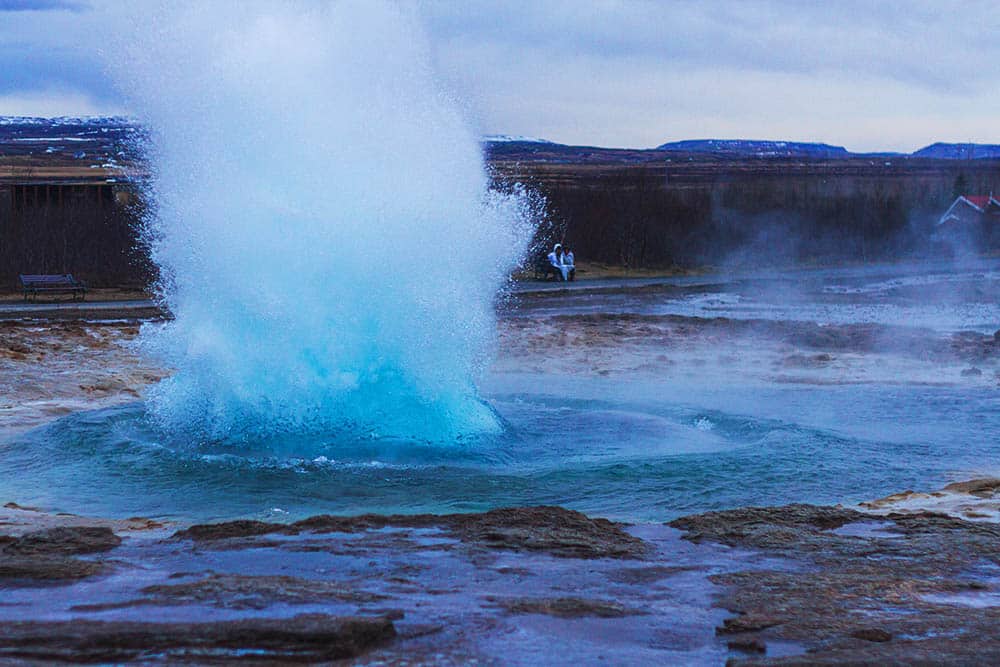Geothermal Power: An Introduction
As the world moves towards a more sustainable future, the search for clean energy sources becomes even more critical. Geothermal power is one of the many renewable energy sources available today. Harnessing the heat from the earth’s core has been a concept for many years now, but it is only recently that it became more commercially viable.
Geothermal power is a type of renewable energy that utilizes the earth’s natural heat to generate electricity. Unlike solar or wind, it is entirely reliable and 24/7 since the earth’s heat stays relatively constant beneath the surface. It’s also a clean source of energy, emitting minimal greenhouse gases and pollutants.
How Geothermal Power Works
Geothermal power works by drilling deep into the earth’s surface to tap into the earth’s natural heat. The temperature of the earth’s core can reach up to 5,000°C, and that heat is continually being produced through the decay of radioactive elements. This heat is transferred to the earth’s crust and can be accessed through geothermal sources.
Once drilling has been completed, wells are created, and a heat transfer fluid is then inserted into the wells. This fluid is heated as it flows through the rocks and is then transported to a power plant where it generates electricity. The electricity is then sent to the grid and distributed.
Advantages of Geothermal Energy
1. It’s a Clean and Environmentally Friendly Source of Energy
Geothermal energy is an incredibly clean and environmentally friendly source of energy. It doesn’t produce any harmful gases or pollutants that would harm the environment. It’s safe for the air, water, and soil.
2. It’s a Reliable Source of Energy
Unlike solar and wind power, geothermal energy is a reliable source of energy. It can generate power 24/7, which makes it ideal for baseload power. Baseload power is the minimum amount of power required to meet the demand for electricity.
3. It’s Cost-Effective
Although geothermal power plants require high initial investments, their operating costs are significantly low. The cost of extracting geothermal energy is cheaper than other conventional sources of energy.
4. It Reduces Dependence on Fossil Fuels
Geothermal energy reduces dependence on fossil fuels. As more renewable energy sources are utilized, reliance on traditional fuel sources will decrease.
5. It Creates Jobs
Construction and operation of geothermal power plants can create jobs in the energy sector, which can help stimulate local economies.
Challenges of Geothermal Energy
1. High Initial Investment Costs
The high cost of drilling and constructing geothermal power plants can be a significant challenge.
2. Geographical Limitations
Geothermal energy is limited to specific geographic areas. This can be a limitation when it comes to scaling up geothermal power globally.
3. Environmental Concerns
Although geothermal energy is an environmentally friendly energy source, critical environmental concerns arise during the drilling process.
Geothermal Energy in the World
Currently, geothermal energy is only used to generate up to 1% of the world’s electricity. However, it’s use is growing in many places worldwide. Here are some countries that are leading the way in geothermal energy:
1. United States
The United States is the world’s largest geothermal energy producer, with a capacity of 3,700 MW. California dominates the country’s geothermal energy production, with 40 plants across the state.
2. Iceland
Iceland is one of the few countries that generates all its electricity from renewable energy sources. The country has tapped into its geothermal sources to generate almost 30% of their electricity needs.
3. Philippines
The Philippines is the second-largest producer of geothermal energy in the world, with a capacity of 1,900 MW.
4. Kenya
Kenya has made significant progress in developing geothermal energy, with a 600 MW capacity.
The Future of Geothermal Energy
The future of geothermal energy looks promising. Although it’s still a developing industry, its growth is set to increase in the future. Here are some reasons why:
1. Government Incentives and Increased Investments
Governments worldwide are investing in the development of geothermal energy. They are offering financial incentives and grants for companies to invest in geothermal projects.
2. Technological Advances
Advancements in drilling technology and new cooling systems have enabled the development of more efficient and cost-effective geothermal power systems.
3. Increasing Demand for Renewable Energy Sources
As the demand for clean and sustainable energy grows, geothermal energy will become more critical in the energy mix.
Tips for Reducing Energy Use
Although renewable energy sources need to be developed, reducing energy consumption is equally important. Here are some tips for reducing energy consumption.
1. Turn off lights and appliances when not in use
2. Use energy-efficient appliances.
3. Insulate your home
4. Install energy-saving light bulbs.
5. Use public transportation or bike
Conclusion
Geothermal energy is a sustainable and reliable source of energy. Although it has its challenges, it’s a promising industry with substantial potential. With more Governments recognizing the importance of renewable energy sources and increased investments in the industry, it’s crucial for the world to move towards cleaner, sustainable energy sources like geothermal power.
